Creative Brewery Designs: Ideas, Trends, and Inspirations
Overview of Brewery Designs
Brewery designs are the unsung heroes of the craft beer industry. Imagine walking into a brewery and feeling instantly connected to the space—from the tantalizing aroma of hops in the air to the inviting ambiance that makes you want to stay for hours. A well-thought-out brewery design does more than house equipment; it tells a story, creates a vibe, and even impacts the beer itself.
In this article, we’ll explore everything you need to know about brewery designs. From industry trends to cost planning and sustainable practices, we’ll guide you through the ins and outs of creating a brewery space that not only looks stunning but also functions seamlessly. Whether you’re a seasoned brewer or just dreaming of starting your own taproom, this guide will provide inspiration and actionable advice.
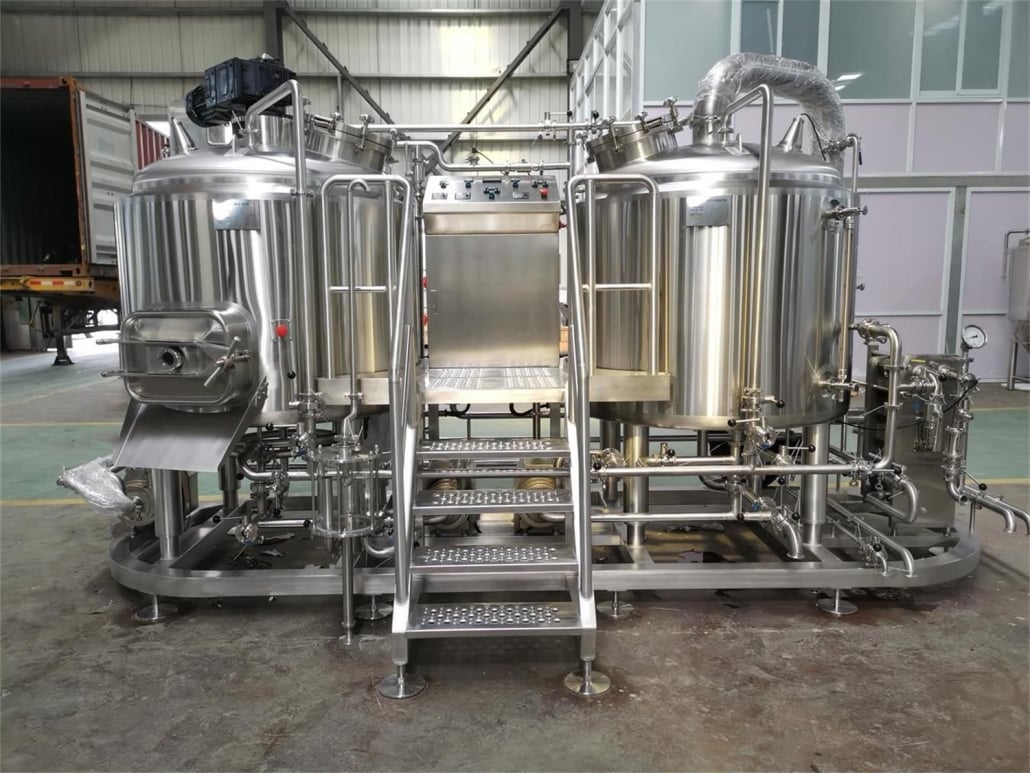
Industry Trends in Brewery Designs
The craft beer scene has exploded in recent years, and so has the creativity behind brewery designs. Gone are the days when breweries were hidden in nondescript industrial zones. Today, breweries are vibrant, Instagram-worthy destinations that blend art, science, and community.
One major trend is the shift toward open-concept brewing spaces. These layouts let customers see the magic happen, with gleaming fermentation tanks and brewers hard at work just beyond a glass partition. It’s all about transparency—literally and figuratively.
Sustainability is another driving force. Breweries are incorporating reclaimed wood, energy-efficient systems, and water-saving technologies into their designs. Not only is this good for the planet, but it’s also a fantastic marketing tool. Customers love supporting businesses that align with their values.
Finally, breweries are doubling as cultural hubs. Think live music stages, art installations, or even yoga classes in the tasting room. The focus is on creating a multi-functional space that draws people in for more than just beer.
Design Inspiration for Brewery Spaces
When it comes to brewery design, inspiration can come from anywhere. Some breweries take cues from their local culture, incorporating regional materials, art, or themes. Others go for a sleek, modern look with minimalist aesthetics and high-tech equipment.
Consider the vibe you want to create. Are you aiming for cozy and rustic, with exposed brick and warm lighting? Or do you prefer an industrial-chic feel, with metal accents and bold lines? Whatever your style, it should align with your brand identity. For example, a brewery focusing on experimental beers might opt for a futuristic design, while one with traditional lagers might lean toward a classic pub atmosphere.
Nature is another great source of inspiration. Incorporating natural elements like plants, skylights, or water features can create a calming and inviting space. Plus, these features often pair well with sustainability goals.
The Optimal Design Layout for Brewery Functional Areas
A brewery isn’t just one big room with tanks and taps. It’s a carefully orchestrated space with distinct functional areas. Let’s break it down:
Brewing Area
This is the heart of your operation. The brewing area needs to be efficient and safe, with plenty of room for equipment like mash tuns, kettles, and fermentation tanks. Proper ventilation and drainage are critical to handle steam and spills. Many breweries opt for an open floor plan here to showcase their process to customers.
Storage Room
Storage areas are often overlooked, but they’re crucial for keeping your ingredients and finished products fresh. A cool, dry space with proper shelving can make all the difference. If you’re storing kegs, consider space-saving racks or pallets.
Tasting Room
This is where your brand comes to life. The tasting room should be welcoming and reflect your brewery’s personality. Comfortable seating, ambient lighting, and creative decor all play a role. Don’t forget about acoustics; no one wants to shout over their beer.
Outdoor Seating Area
An outdoor space can be a game-changer, especially in warmer climates. Think picnic tables, string lights, and maybe even a fire pit. Bonus points for offering lawn games or a dog-friendly policy.
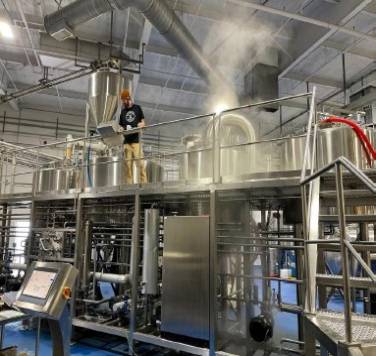
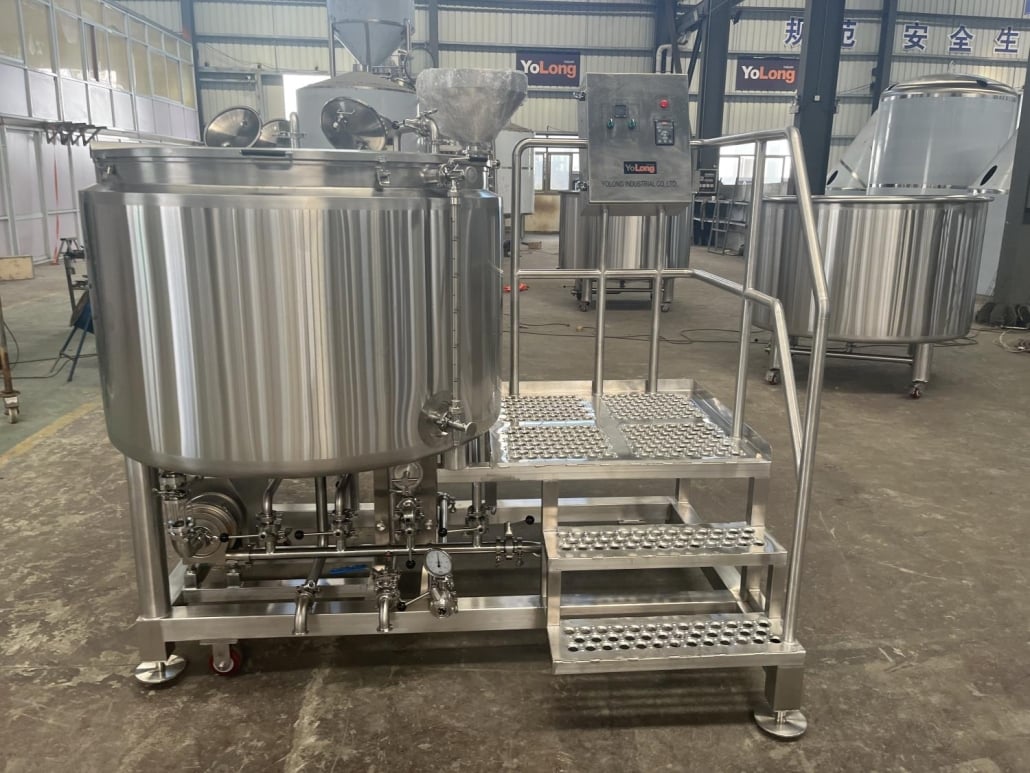

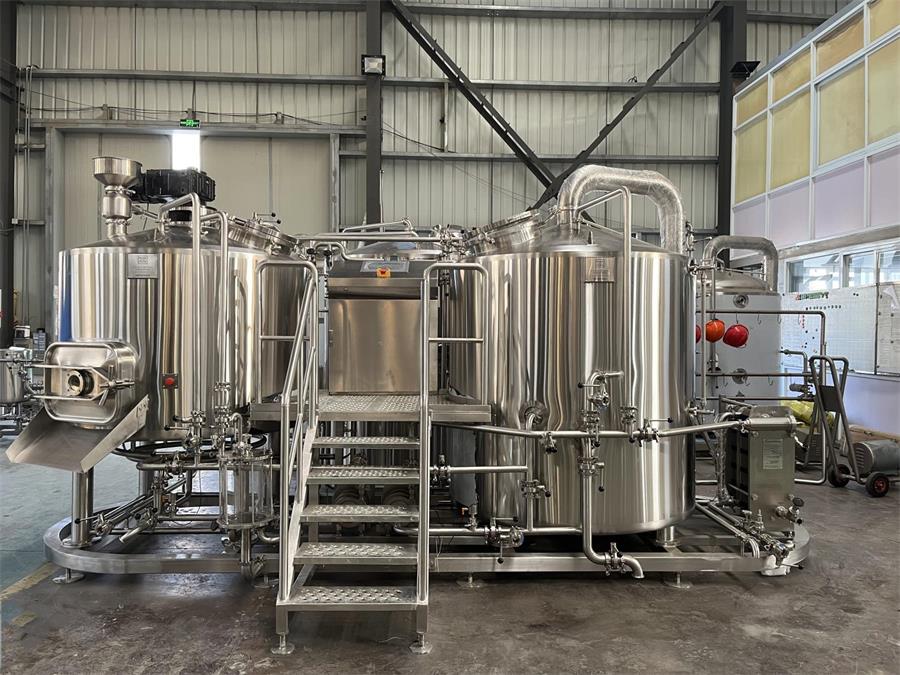
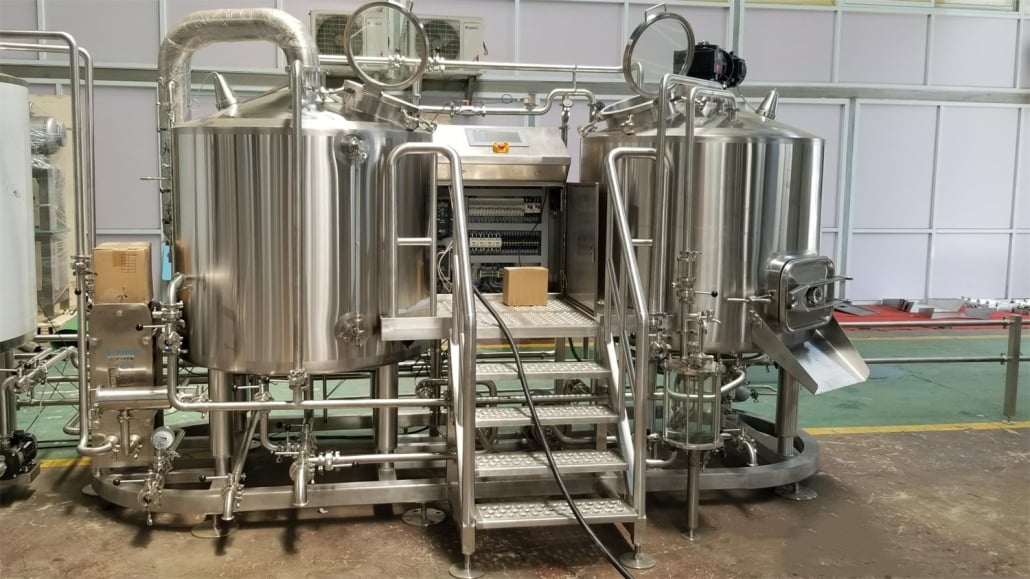
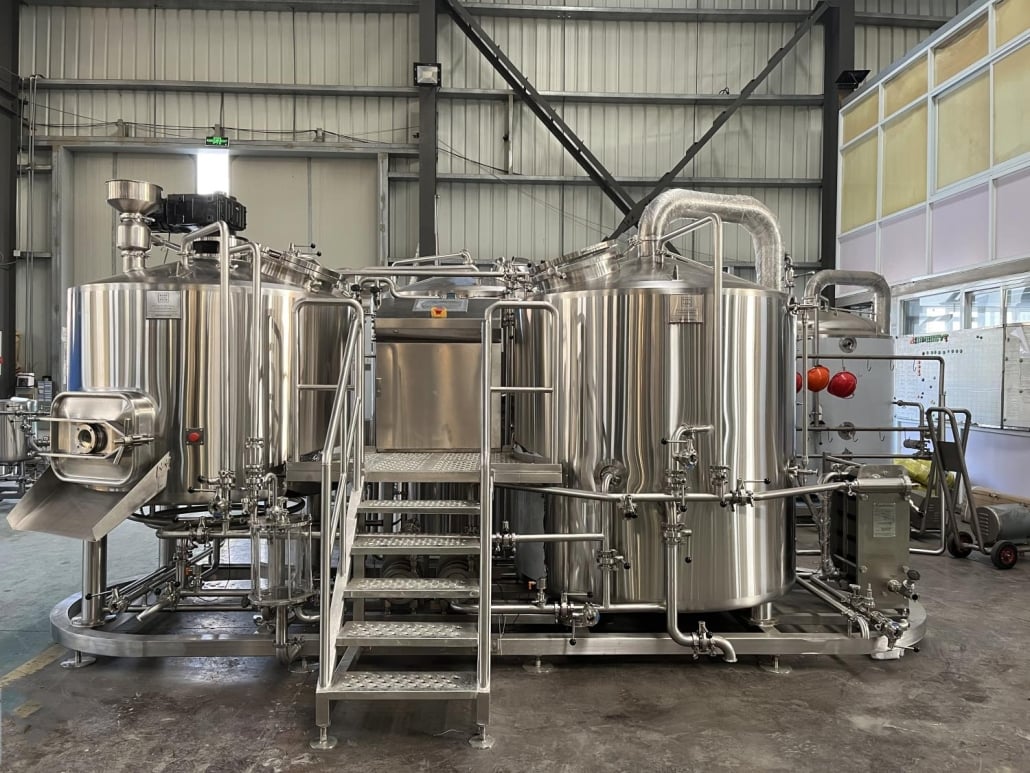
How Brewery Designs Create a Unique Brand Style
A brewery’s design is a direct extension of its brand. It’s what sets you apart in a crowded market. The table below illustrates how design elements contribute to brand identity:
| Design Element | Brand Impact |
|---|---|
| Color Scheme | Evokes emotions and creates a recognizable aesthetic (e.g., earthy tones for a rustic brewery). |
| Materials | Reclaimed wood or steel conveys sustainability or industrial vibes. |
| Layout | Open designs signal transparency; cozy nooks create intimacy. |
| Lighting | Warm tones feel inviting; neon signs can add a trendy edge. |
| Artwork and Decor | Custom murals or beer-related art reinforce your story and mission. |
Your design choices should be intentional and aligned with the experience you want to provide. Think about how every element, from the tap handles to the bathroom signs, tells your brand’s story.
Brewery Designs: Environmental and Sustainable Practices
Sustainability isn’t just a buzzword; it’s a necessity. Breweries are uniquely positioned to make an environmental impact, both good and bad. Incorporating green practices into your design can save money and attract eco-conscious customers.
Energy Efficiency
Investing in energy-efficient brewing systems can reduce your carbon footprint significantly. LED lighting, solar panels, and smart thermostats are simple yet effective upgrades.
Water Conservation
Beer production requires a lot of water, but innovative designs can minimize waste. Closed-loop systems and water recycling technologies are increasingly popular.
Recycled Materials
From furniture to flooring, using recycled or reclaimed materials adds character and reduces waste. Plus, it’s a great talking point for tours or marketing materials.
Enhancing Customer Engagement Through Interactive Design
How do you turn a one-time visitor into a lifelong fan? Interactive design! Here are some ideas to consider:
- Open Brewing Areas: Let customers watch the brewing process through transparent glass walls. It’s both educational and entertaining.
- Interactive Tours: Offer guided tours that let visitors touch, smell, and even taste different stages of the brewing process.
- Self-Pour Stations: These give customers control over their experience and add a fun, modern twist.
- Customizable Merch Areas: Create a space where visitors can design their own shirts or growler labels.
When customers feel like part of the process, they’re more likely to become brand ambassadors.
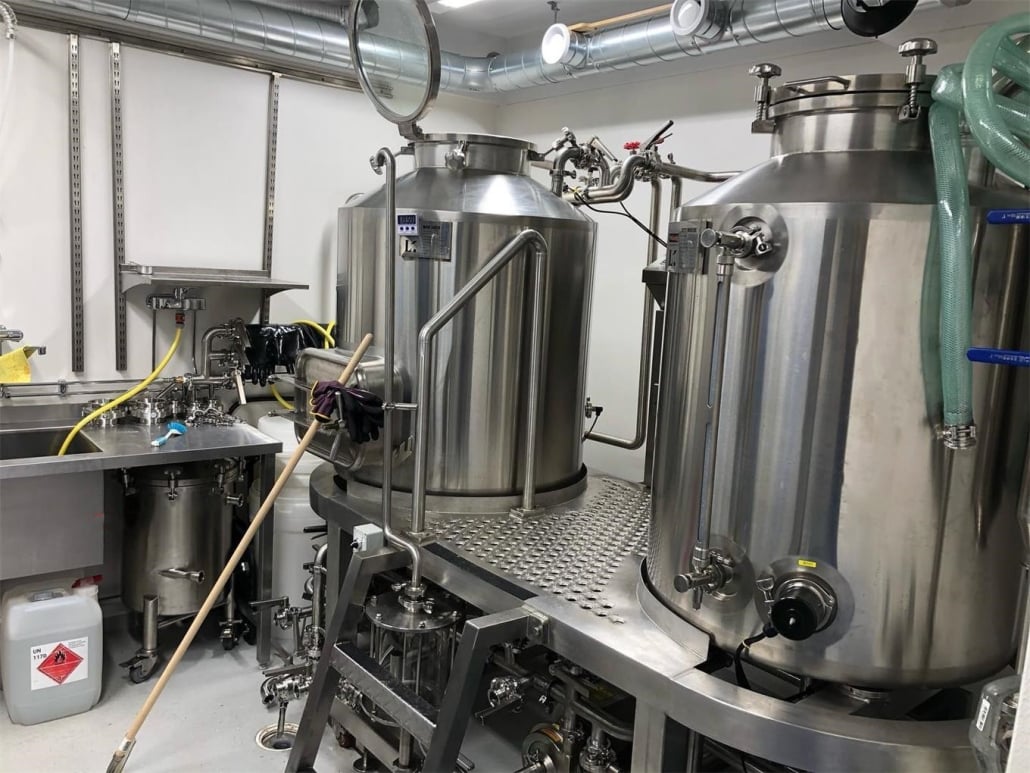
Talking About Brewery Designs‘ Cost Planning and Collaboration
Designing a brewery isn’t cheap, but it’s worth the investment. Start with a realistic budget that accounts for equipment, construction, and decor. Collaborate with professional designers who specialize in breweries to ensure every detail aligns with your vision.
Here’s a rough breakdown of potential costs:
| Expense | Estimated Cost |
|---|---|
| Brewing Equipment | $100,000 to $500,000 |
| Construction | $150,000 to $1,000,000 |
| Furniture and Decor | $50,000 to $200,000 |
| Marketing Signage | $10,000 to $50,000 |
While the upfront costs can be daunting, a well-designed brewery pays for itself through customer loyalty and operational efficiency.
FAQs
| Question | Answer |
|---|---|
| What’s the most important area to focus on? | The brewing area, as it’s the backbone of your operation. |
| How can I make my brewery stand out? | Focus on unique design elements that reflect your brand identity and values. |
| Are sustainable designs more expensive upfront? | Yes, but they save money in the long run and appeal to eco-conscious customers. |
| Do I need a professional designer? | It’s highly recommended to ensure your space is both functional and visually appealing. |
| How much space do I need for a small brewery? | Around 2,000 to 5,000 square feet, depending on your production goals and customer capacity. |
Frequently Asked Questions (FAQ)
- Q1: How do Brewery Designs influence taproom sales and dwell time?
A1: Clear sightlines to tanks, acoustically treated ceilings, and layered seating (bar, communal, lounge) can increase average dwell time 15–30% and boost per-guest spend via add-on flights and merch. - Q2: What’s the ideal customer-to-seat ratio for a midsize taproom?
A2: Plan 1.1–1.3 seats per peak-hour guest with 15–20 sq ft (1.4–1.9 m²) per seat, plus 25–35% flexible standing space for events to preserve flow and code egress. - Q3: Which sustainability upgrades offer the fastest payback in Brewery Designs?
A3: LED + daylighting controls, demand-controlled ventilation, low-flow pre-rinse + rinse water recovery, and glycol loop insulation typically see 12–36 month paybacks. - Q4: How can Brewery Designs reduce noise without killing the vibe?
A4: Combine absorptive ceiling baffles (NRC ≥ 0.8), soft surfaces in seating zones, rug islands, and targeted wall panels placed at first reflection points; aim for 65–75 dBA in busy service. - Q5: What ADA/Universal Design features are often missed?
A5: 36 in (915 mm) clear paths, 34 in (864 mm) max bar counter sections, knee-clear “low” POS stations, tactile signage, and contrasting floor edges for low-vision guests.
2025 Industry Trends: Brewery Designs
- Immersive transparency: Elevated brew decks and glass-front cellars make production part of the guest journey without compromising HACCP zones.
- Carbon- and water-smart builds: Onsite CO2 recovery for larger facilities, heat reclaim to preheat brew water, and rainwater harvesting for irrigation/cleaning where allowed.
- Flexible, event-ready taprooms: Plug-and-play AV, movable walls, and modular furniture to pivot from brunch to concerts to maker markets.
- Biophilic and local material palettes: Plant walls, skylights, and regional stone/wood align with brand storytelling and improve perceived air quality.
- Data-driven layouts: Heatmaps from POS and Wi-Fi analytics inform bar placement, queue management, and merch adjacencies.
2025 Benchmarks and Cost/Performance Signals for Brewery Designs
| Metric / Feature | 2023 Typical | 2025 Target/Best Practice | Why it Matters | Sources |
|---|---|---|---|---|
| Energy use intensity (EUI, kBtu/sq ft/yr) | 50–70 | 35–55 | Lower utility spend, ESG goals | U.S. DOE Better Buildings |
| Water-to-beer ratio (hl/hl, whole site) | 4.5–6.0 | 3.0–4.0 | Conservation, cost | Brewers Association Sustainability |
| Average dBA in taproom (peak) | 75–85 | 65–75 | Comfort → longer dwell time | Acoustical Society guidance |
| Natural light daylit floor area (%) | 20–35 | 40–60 | Reduces lighting load, comfort | IES/LEED daylighting |
| Seating mix (bar/communal/lounge/outdoor) | 40/30/20/10 | 30/30/25/15 | Versatility, revenue per seat | Industry case audits |
| CO2 recovery adoption (production >15k bbl) | <10% | 15–25% | Sustainability, cost hedge | BA benchmarking |
Selected references: Brewers Association — https://www.brewersassociation.org; U.S. DOE — https://www.energy.gov; Illuminating Engineering Society (IES) — https://www.ies.org
Latest Research Cases
Case Study 1: Heat-Reclaim Taproom Integration (2025)
Background: A 15,000 sq ft brewery-taproom faced rising HVAC and water-heating costs.
Solution: Added brew-kettle stack condenser and glycol chiller heat reclaim to preheat domestic hot water and temper outside air; upgraded to LED + daylighting controls.
Results: 18% reduction in site EUI; domestic hot water gas use down 41%; simple payback ~2.3 years; guest comfort scores improved (thermal votes +0.4 on ASHRAE scale).
Case Study 2: Acoustic Zoning Boosts Dwell Time (2024)
Background: High reverberation (RT60 ~1.8 s) led to 45-minute average stay and low midweek sales.
Solution: Installed ceiling baffles, fabric panels at first reflections, and zoned music levels; reoriented bar to reduce queue cross-traffic.
Results: RT60 reduced to 0.9 s; average dwell time +24%; check average +12% on weeknights; reduced staff vocal fatigue complaints.
Expert Opinions
- Christian Ettinger, Founder, Hopworks Urban Brewery
Viewpoint: “Sustainability in Brewery Designs isn’t a layer you add; it’s a backbone—flow, daylight, and heat reclaim determine both guest experience and margins.” - Natalie Cilurzo, Co-owner/President, Russian River Brewing Company
Viewpoint: “Transparent production spaces foster trust and education—guests remember the feeling of seeing their beer being made.” - Brent Johnson, AIA, Principal, Craft Architecture Studio
Viewpoint: “Design the back-of-house first. Clear separations, efficient circulation, and clean utilities make the hospitality magic possible.”
Practical Tools/Resources
- Brewers Association Sustainability and Draught Quality manuals — https://www.brewersassociation.org
- U.S. DOE Better Buildings (HVAC, heat recovery, lighting) — https://www.energy.gov
- IES Lighting Design resources — https://www.ies.org
- ADA Accessibility Guidelines — https://www.ada.gov
- LEED v4.1 Building Design & Construction — https://www.usgbc.org
- Acoustical Society of America primers — https://acousticalsociety.org
Last updated: 2025-09-01
Changelog: Added 5 FAQs on seating ratios, acoustics, sustainability paybacks, ADA features, and sales impact; introduced 2025 Brewery Designs trends with benchmark table and sources; provided two case studies on heat reclaim and acoustic zoning; added expert viewpoints and practical resources
Next review date & triggers: 2026-02-15 or earlier if BA sustainability benchmarks update, local energy codes change, or new CO2 recovery/heat-reclaim tech becomes widely available
Share this entry
Interested in learning more about Brewing Systems including additional details and pricing information? Please use the form below to contact us!
YOLONG BREWERY EQUIPMENT FAQS
- Commercial Brewery / Craft Brewery / Microbrewery / Nanobrewery
- What is The Difference Between Craft Beer and Industrial Beer?
- The Bespoke Differences In Custom Brewing Systems
- Everything You Need to Know About Kettle Souring
- How to Choose Brewing Equipment for Your business?
- How To Choose The-Best Partner To Build Your Commercial Microbrewing System?
- Two Detection Sensors That You Need To Use In Your Brewhouse System
- Remote Control Applications in Brewing Equipment/How does it work?
- How To Clean Your Brand New Brewery Tanks?

